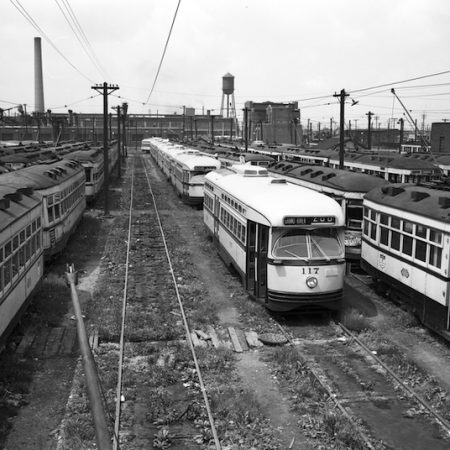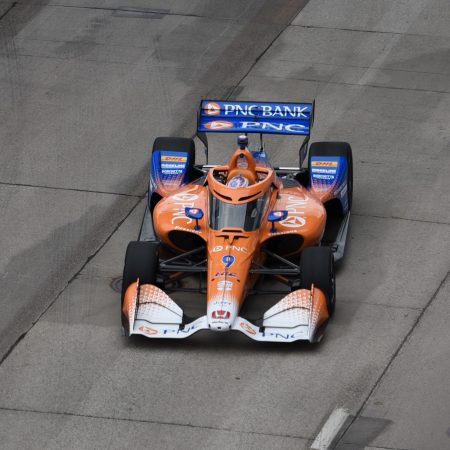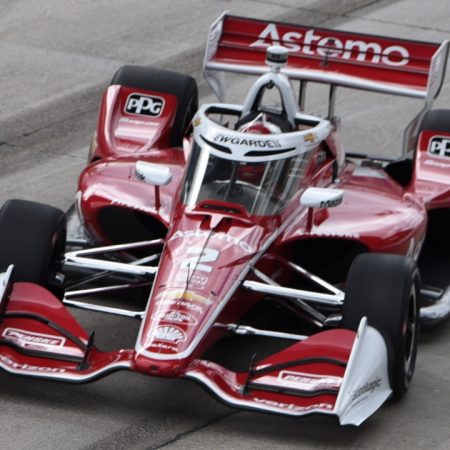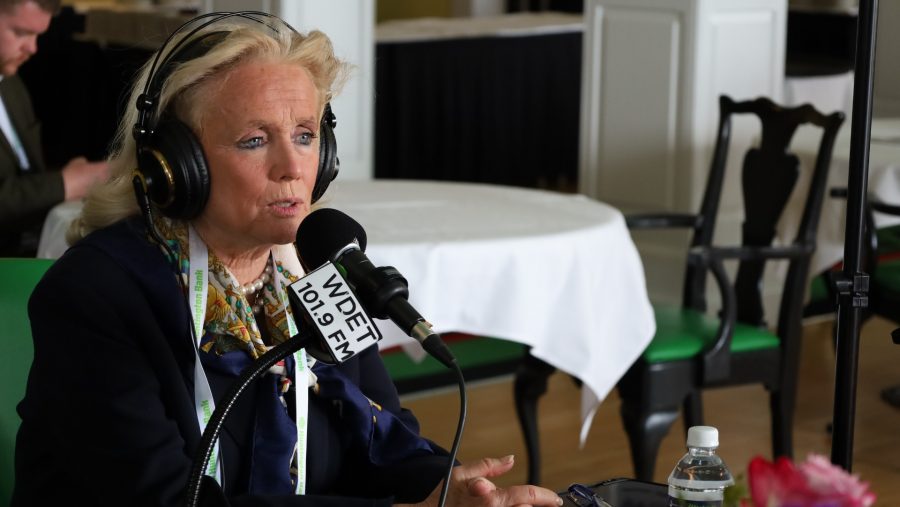CuriosiD: Did Detroit automakers sabotage public transit?
WDET’s CuriosiD series answers your questions about everything Detroit. Subscribe to CuriosiD on Apple Podcasts, Spotify, NPR.org or wherever you get your podcasts.
Listen: Did Detroit automakers sabotage public transit?
In this episode of CuriosiD, listener Jennifer Kulczycki of Sterling Heights asks...
“I’ve heard for many years that metro Detroit doesn’t have a robust transit system because the Big Three undermined the streetcar and bus systems in order to sell more vehicles. I’ve always been curious about that, but I’ve never really been able to find any concrete evidence of it.”
The short answer
In 1949, General Motors and the Firestone Tire company, among others, were convicted of conspiring to monopolize the sale of buses and products to National City Lines, which had taken control of dozens of transit systems. But GM, Firestone and the others were acquitted of trying to, in effect, monopolize the transit industry. And experts say automakers could not run over Detroit’s streetcars, because the city itself owned the system.
Riding the rails all around the town
Imagine traveling back to Detroit in the 1920s and ’30s, when streetcar tracks split the middle of Woodward Avenue.
Riders who once strolled past horse-drawn carriages to get onboard the Department of Street Railways system, known as the DSR, now had to dodge vehicles going 30 miles an hour or more.
The DSR touted the system’s widespread use. It noted that at peak periods of the day as many as 1,000 streetcars crisscrossed the city, “carrying Detroit’s industrial army.”
It was also a different animal from some other municipalities, because in 1922 the city itself had bought out the streetcar system, ostensibly to operate it more efficiently.
“Every time a bus or a trolley car rolls down the street, there’s a stockholder’s meeting in motion,” the DSR proclaimed.

Iowa State University Professor Robert Pfaff did his dissertation at the University of Michigan on the history of Detroit’s streetcars. He says it was the largest publicly-owned transit system in the U.S. at the time.
And Pfaff contends Detroit’s burgeoning auto industry viewed rail cars as a necessity.
“They recognized that this was the way that most of their workers actually got to work,” he said.
The takeover of transit
Over those decades, a company called National City Lines (NCL) and its subsidiaries, backed by a consortium that included General Motors and Firestone, took control of dozens of transit systems.
The moves caught the interest of the U.S. Justice Department.
In 1949, GM, Firestone and others in the consortium were convicted of a conspiracy to monopolize the sale of buses, fuel and similar products to National City Lines. They were fined a token few thousand dollars each. But the companies were acquitted of trying to take over the systems owned by NCL in order to, in effect, form a transit monopoly.
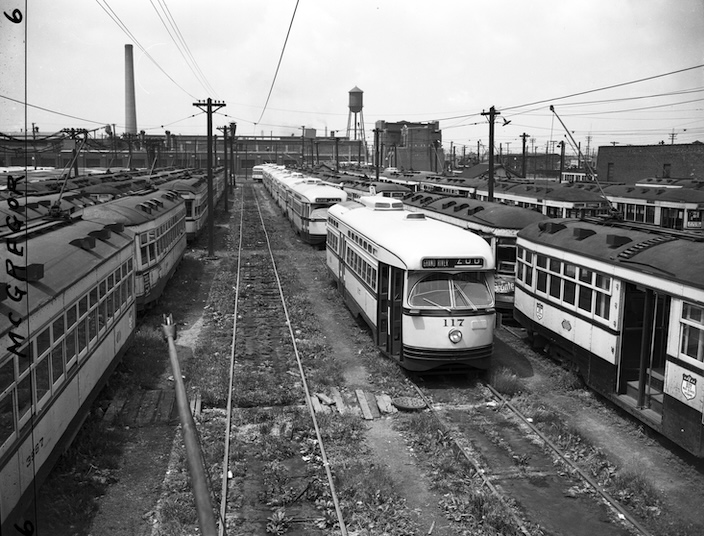
Still, the idea of automakers sabotaging streetcars gained increasing traction in the public imagination, even serving as the plot for numerous books and movies.
For instance, the 1988 animated film “Who Framed Roger Rabbit?” features the villainous Judge Doom buying up the Red Car rail line, preparing for a new freeway with “wonderful billboards reaching as far as the eye can see.”
When a character tells him no one will use the freeway since they can take the streetcar for 5 cents, Doom replies, “Oh they’ll drive. They’ll have to. You see, I bought the Red Car so I could dismantle it!”
Buses take the lead
Pfaff hits the brakes on any takeover of streetcars in Detroit, however, since the city itself owned the system.
“That automatically prevented other private investors from trying to come in and disrupt that space. We are the ones to blame for dismantling that system. We don’t have some private company that swept in with some grand scheme, we have to look inwardly at ourselves,” Pfaff said.
In the mid-20th Century, the American Dream was paved with highways crossing the country. Pfaff says metro Detroit transit officials wanted to be on the cutting edge of it all.
“The super-modern thing were these nice, fast, rubber-tired diesel buses that operate on the streets. And they decided if they’re gonna serve the modern region with more suburban residential areas, they couldn’t do electrification and tracks. The easy way to do it was with buses.”
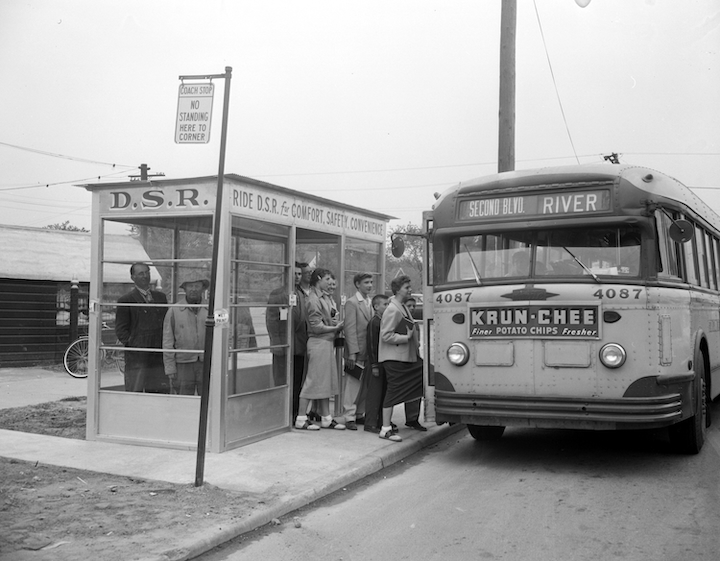
The transit system that is
About three-quarters of a century later, Metro Detroit’s transit system unfolds along streets like Gratiot Avenue.
Detroiter Charles Green stands at a bus stop on Gratiot near 12 mile in Macomb County. Green says he grew up riding buses with his father.
He calls newer routes, like the suburban SMART system’s Fast Gratiot line into the city, a definite upgrade. Mostly.
“I like the bus. It’s eco-friendly and convenient. But the frequency of the bus just ain’t right,” Green lamented. “I work at a bar and man, every bar over there is closing after midnight. So at that point I gotta pay $20 for an Uber just to get home.”
Detroit’s DDOT bus system wants to significantly increase its number of drivers and cut wait times for customers. But at a bus shelter further along Gratiot, Detroiter Shina Harps says she’s part of the roughly 25–33% of the city’s residents who don’t have their own vehicle.
In the car capitol of the world, Harps says that quickly becomes a badge of shame.
“I do get that a lot, ‘Oh you take the bus,’” Harps said in a disparaging tone. “That’s my life. I’m living in my truth.”

‘Does Detroit really want public transit?’
Detroit transit also carried a stigma among some in the federal government.
The Vice President of Rock, billionaire Dan Gilbert’s family of companies, is Jared Fleisher. He previously worked as a Washington, D.C.-based attorney who helped a Detroit nonprofit group develop what they hoped would be both a catalyst and a part of improved public transit in the region – the QLINE streetcar system.
“Going back to the Carter administration, Washington never saw metro Detroit really be able to get its act together around transit,” Fleisher said. “They did not take us very seriously or send money our way. (The QLINE) was meant to show Washington that we were serious, we were working together around transit in a different way.”
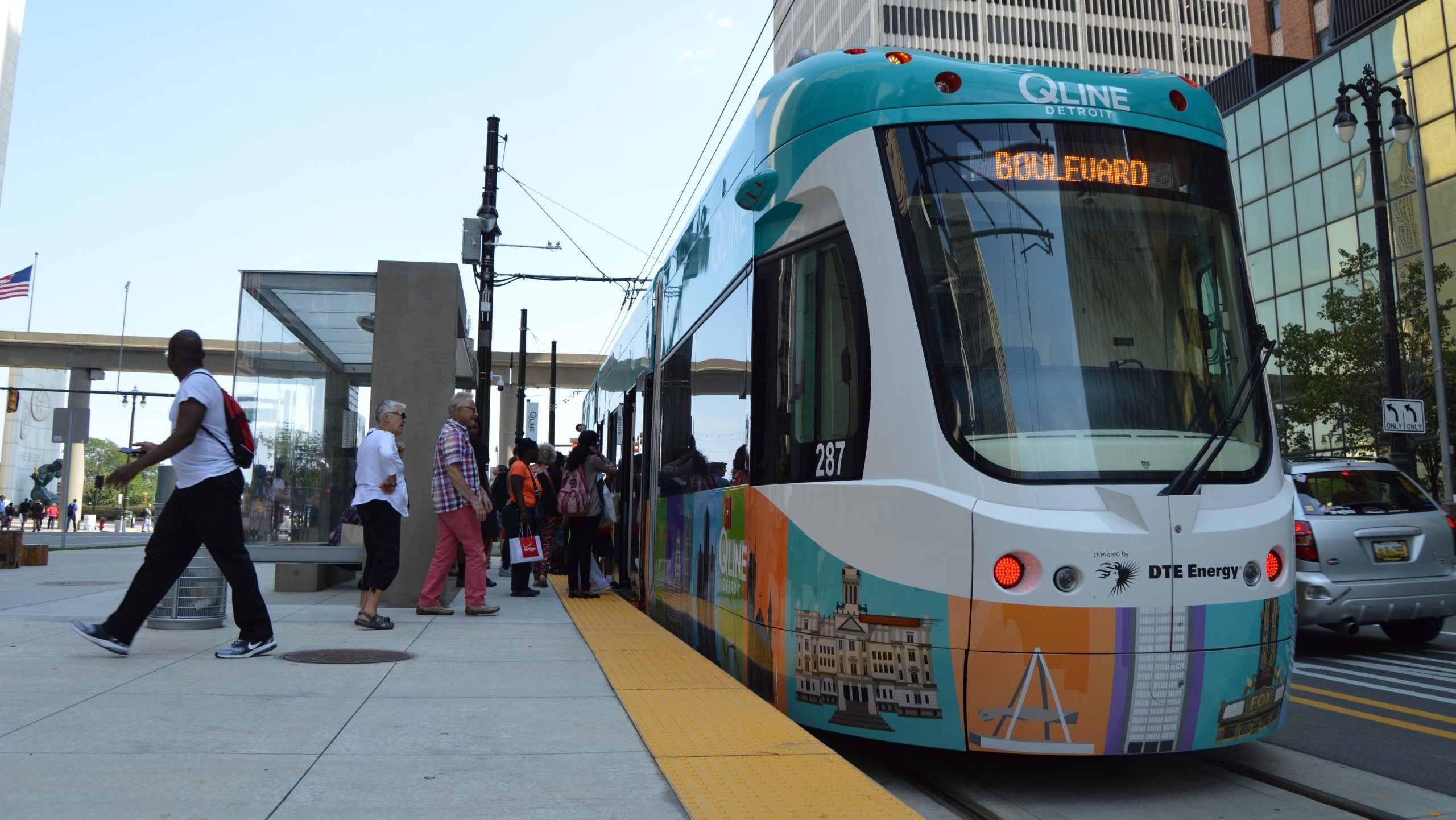
In 2012, before the QLINE even broke ground, officials formed an actual Regional Transit Authority for southeast Michigan, the same kind of transportation agency the federal government worked with in other municipalities.
But Fleisher says a four-county millage to fund inter-connected public transit in metro Detroit ran into a roadblock in 2016.
Rural voters came out in force to support then-GOP presidential candidate Donald Trump. Fleisher believes it was an electorate that saw little value in paying extra taxes for a transit system they likely would hardly use.
“It went to the ballot and lost by half a percent. And nine years later, we still have not solved the issue of regional rapid transit.”
A magnet for young talent
What exists alongside bus service, along with Detroit’s elevated People Mover system, is a 3.3 mile stretch of railway on Woodward Avenue punctuated by the clanging bell of the QLINE streetcar.
It’s a reminder of what could be in Detroit, especially for younger travelers.
Onboard the QLINE, Wayne State student Sara Jaloul notes she has her own car. But she says using the streetcar for even a few miles helps her save both gas money and the environment.
“I think the less cars we have on the street is probably a lot less pollution, so that’s really important to me. As much public transportation as possible should be best,” Jaloul said.
Catering to that smog-free desire is a key selling point for many younger workers, says the head of the metro area’s Regional Transit Authority, Ben Stupka. And he says no one wants to grow the transit system more now than Detroit’s automakers.
“The Big Three and those that support them in that ecosystem have a laser-focused understanding that transit is part of the brew, if you will, that keeps and attracts talent to this region,” Stupka said. “And that is what they need to survive and thrive.”
Whether that eventually leads to metro Detroit public transportation that legitimately competes with other regions across the country though, remains a question for down the road.
Meet the listener

Jennifer Kulczycki is the Director of External Affairs and Communications at The Kresge Foundation. She lives in Sterling Heights. She came to metro Detroit from western New York state fresh out of college to work in the automotive industry.
We want to hear from you!
Have a question about Detroit or southeast Michigan?
Send it our way at wdet.org/curiosid, or fill out the form below. You ask, we answer.
More from CuriosiD:
- What happens to old fire trucks in Detroit?
- What’s the story behind metro Detroit’s mile roads?
- What is on Boblo Island today? And what happened to the Boblo boats?
Want more stories like this? Sign up for WDET’s free weekly newsletter and never miss a curiosity uncovered.
Support the podcasts you love.
One-of-a-kind podcasts from WDET bring you engaging conversations, news you need to know and stories you love to hear. Keep the conversations coming. Please make a gift today. Give now »The post CuriosiD: Did Detroit automakers sabotage public transit? appeared first on WDET 101.9 FM.
